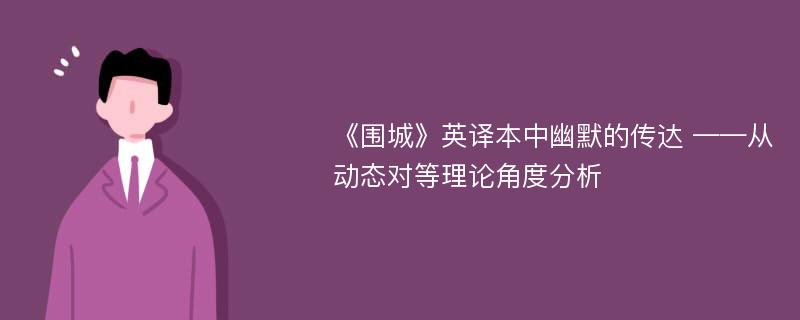
论文摘要
根据动态对等理论,只有当译文读者对译文的反应和原文读者对原文的反应大致相当时,该译文才是合格的译文。幽默翻译的主要任务是再现原文幽默的精神并引起译文读者发笑,换句话说,幽默翻译也很重视读者的反应。这是动态对等理论可以作为评价幽默翻译质量标准和应用于指导幽默翻译实践的理论基础。本文以是否成功再现了原文的幽默精神,并引起了译文读者与原文读者大致相同的幽默感受为标准,主要从语言和文化两个方面对《围城》中的幽默翻译进行了细致探讨。通过分析《围城》中幽默的翻译,笔者发现译者在翻译过程中运用了各种不同的译法,达到了动态对等,由此证明用动态对等理论来评价和指导幽默翻译是可行的。根据动态对等理论,绝对的对等永远不可能达到,但是动态对等常常可以实现。在幽默翻译中,无论译文在内容上多么忠实于原文,如果译文读者无法体会到原文的幽默并发出笑声,那么该译文就不是合格的译文。
论文目录
摘要AbstractChapter One Introduction1.1 Need for the Study1.2 Structure of ThesisChapter Two Literature Review2.1 The View of Linguistic School on Equivalence2.2 The View of Cultural School on EquivalenceChapter Three Dynamic Equivalence3.1 The Development of Dynamic Equivalence Theory3.2 Three Concepts of Dynamic Equivalence3.2.1 Receptors’Response3.2.2 Language Form3.2.3 CultureChapter Four Humor Translation4.1 A Brief Account of Humor4.1.1 Definition of Humor4.1.2 Different Classifications of Humor4.2 Factors Affecting Humor Translation4.2.1 L inguistic Factors4.2.2 Cultural FactorsChapter Five A Case Study of Humor Translation in Fortress Besieged5.1 Qian Zhoushu and his novel5.2 The Features of Humor in Wei Cheng5.3 The Humor Translation Techniques Adopted in Fortress Besieged5.3.1 Literal Translation5.3.2 Alteration5.3.3 Annotation5.3.4 Subtraction5.3.5 AdditionChapter Six ConclusionBibliography攻读硕士学位期间所发表的研究成果Acknowledgements
相关论文文献
标签:围城论文; 幽默翻译论文; 动态对等论文; 读者反应论文;
《围城》英译本中幽默的传达 ——从动态对等理论角度分析
下载Doc文档
